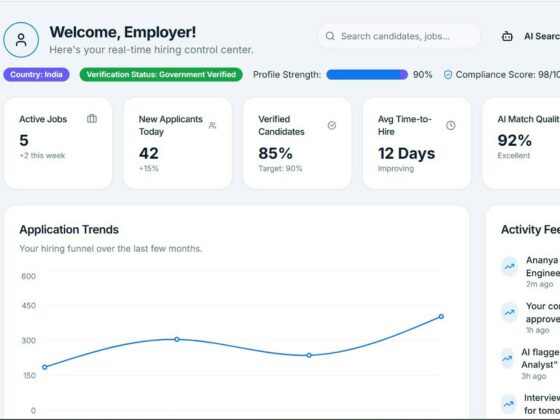
Across the Caribbean, a region renowned for attracting international tourists, hotels are embracing digital personalization to enhance guest engagement and boost direct bookings. As guest expectations evolve and online competition intensifies, the Caribbean Hotel and Tourism Association (CHTA) continues to support the region’s growth, representing a diverse membership that now spans destinations like Puerto Rico, the Bahamas, the Netherlands Antilles, and beyond.
Within this dynamic landscape, Sailrock South Caicos, a luxury retreat in the Turks & Caicos Islands, stands out as a prime example of how properties are blending authentic island hospitality with data-driven strategies to craft seamless, high-touch guest journeys.
In this exclusive interview, we spoke with Sanovnik Destang, President of the Caribbean Hotel and Tourism Association and Executive Director of Bay Gardens Resorts, along with Kashmie Ali, former Vice President of Global Brand Operations, Sales and Marketing at Sailrock South Caicos. Together, they share how Caribbean hoteliers are leveraging personalization, first-party data, and direct channel optimization to stay competitive in a rapidly shifting digital landscape.
Let’s take a closer look at how these hospitality leaders are shaping the future of the guest journey in the region starting with Sanovnik, who offers valuable insight into the broader hospitality landscape in the region.
Sanovnik: The CHTA is the leading voice of the private sector in Caribbean tourism, representing national associations and thousands of hotels and partners across 32 countries. Our mission is to unify and strengthen the industry through advocacy, networking, training, and business development.
Over the past year, we’ve sharpened our advocacy, built new partnerships, and launched initiatives dedicated to helping hotels grow their most profitable channel. Beyond policy, it’s about shaping the narrative of Caribbean tourism— keeping it authentic, competitive, and resilient.
Sanovnik: We’ve seen a strong rebound in travel demand, but booking behavior is shifting. OTAs still dominate, yet direct bookings through websites, call centers, and loyalty programs are steadily growing. At Bay Gardens Resorts, direct quickly proved to be the most resilient channel during and after the pandemic, as guests sought certainty and a closer relationship with the hotel. It became the best way to highlight our key selling points, from health and safety protocols to our unique location and local ownership.
At the same time, alternative accommodation platforms like Airbnb and Vrbo have grown rapidly. For us, operating villas, this is both a challenge and an opportunity. Hotels that invest in direct booking strategies by leveraging technology, personalization, and storytelling can lower distribution costs while building stronger guest relationships.
Sanovnik: Traditionally, our core market has been leisure travelers from North America and the UK, but we’re seeing greater diversification. Segments like bleisure travelers and digital nomads are growing, fueled by remote work, while Millennials and Gen Z are seeking authentic, immersive experiences that align perfectly with the Caribbean.
The local and regional markets remain critical, though they’ve evolved differently. Intracaribbean travel has recovered since 2022 but still lags pre-pandemic levels due to the loss of carriers like LIAT and Air Antilles. In contrast, local staycations remain strong and proved essential during the pandemic, helping many properties stay afloat. These segments may not match long-haul markets in dollar value, but they are vital for occupancy, smoothing seasonality, and building resilience.
We’re also seeing a resurgence in event-based travel around music festivals, carnivals, and sporting events, while group travel continues to perform very well.
Sanovnik: We’re not anti-OTA, as they provide invaluable reach and visibility, especially for smaller properties. But there is growing awareness of the risks of over-reliance. The goal is balance: using OTAs where they add value while investing in direct channels.
That includes dynamic pricing, stronger loyalty programs, improved websites, and CRM tools that allow personalized offers. CHTA is also developing solutions and partnerships to give hotels—particularly independents—better tools to compete more effectively, with announcements expected soon.
Next, we spoke with Kashmie, former VP of Global Brand Operations at Sailrock South Caicos, about the luxury property’s direct channel strategy.
Kashmie: Sailrock South Caicos is a luxury resort community set on one of the most pristine outer islands in Turks & Caicos, offering private villas, suites, and immersive experiences in a tranquil natural setting. Its direct channel strategy centers on personalization, trust, and ease of use. By tailoring content and streamlining the booking process, Sailrock strengthens guest relationships and drives more direct reservations while staying true to its authentic brand promise.
Kashmie: THN enables Sailrock to deliver a seamless, personalized booking experience. Its predictive technology analyzes visitor behavior in real time, allowing the resort to predict intent and present tailored content, whether that’s highlighting beachfront villas, showcasing limited-time offers, or reinforcing flexible booking policies. By leveraging THN’s personalization tools and benchmarking insights, Sailrock is boosting direct bookings and building guest relationships even before arrival. This blend of data-driven insights and personalized service reflects the resort’s core hospitality ethos.
Kashmie: The most effective personalization campaigns are designed to align content with visitor intent. Sailrock utilized urgency signals for offers, reassurance messages regarding flexible policies, and tailored, unique selling propositions for upselling. Additionally, Sailrock implemented Exit messages, Sticky Image Layers with call-to-action buttons, and countdown timers to minimize abandonment and encourage direct bookings. This approach ensures that every interaction feels timely and relevant.
Kashmie: AI-powered predictive technology is changing the way we interact with travelers online. By analyzing browsing behavior in real time, AI tools can anticipate whether a visitor is likely to book a trip, hesitate, or abandon the process. This allows Sailrock to provide targeted and personalized messages that reduce friction, build trust, and ultimately increase direct bookings.
Kashmie: When Sailrock introduced SafeDirect Travel Assistance on the direct channel, it aligned perfectly with the goal of providing guests with greater peace of mind. Today’s travelers seek assurance that their investments are protected, and by offering complimentary assistance directly on the website, Sailrock eliminated a significant barrier to booking. As a result, there are higher conversion rates, fewer abandoned bookings, and increased guest confidence in booking directly. SafeDirect strengthened Sailrock’s direct sales and reinforced the trust and security that are central to the resort’s ethos.
We took the opportunity to ask both Sanovnik and Kashmie one last question to shed more light on how to improve direct channel performance for Caribbean hotels…
Sanovnik: Start with the basics: ensure your website loads quickly, works seamlessly on mobile, and delivers an easy booking experience. From there, personalization is about using data effectively by tracking guest behavior, segmenting audiences, and tailoring messaging. A returning guest should feel recognized from the moment they land on your site. Even small touches like personalized offers, retargeting, or integrating guest feedback can have a big impact. The aim is to make the direct booking journey not just competitive but superior to third-party options. It is an investment that pays off, and we have seen exceptional results and strong ROI from personalization and tools like THN.
Kashmie: Treat website optimization as a key aspect of enhancing the guest experience. Understand what your audience values and utilize tools like THN to personalize content, build trust, and minimize hesitation. Even small changes, such as clear calls to action, reassuring messages, and mobile-friendly design, can significantly improve conversions and strengthen direct relationships with your guests.
Thank you to Sanovnik and Kashmie for sharing their expert insights with us.








